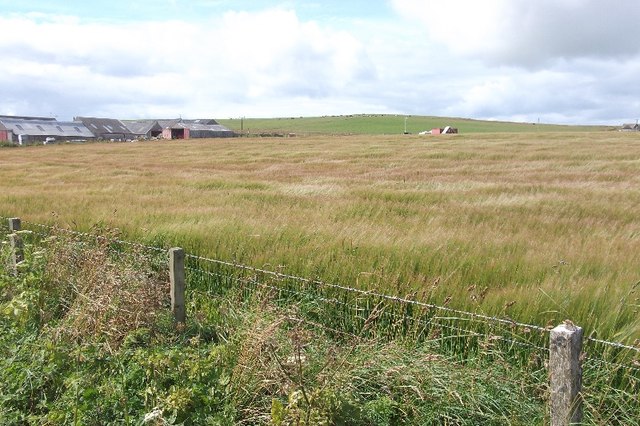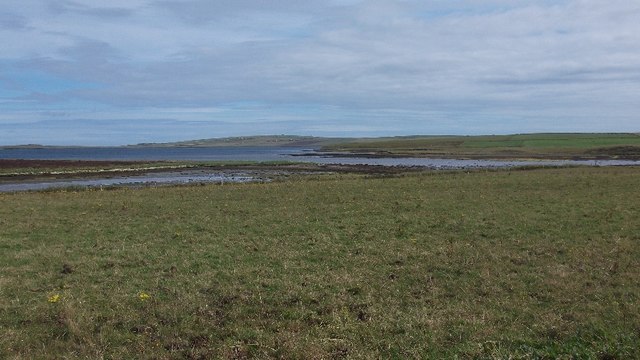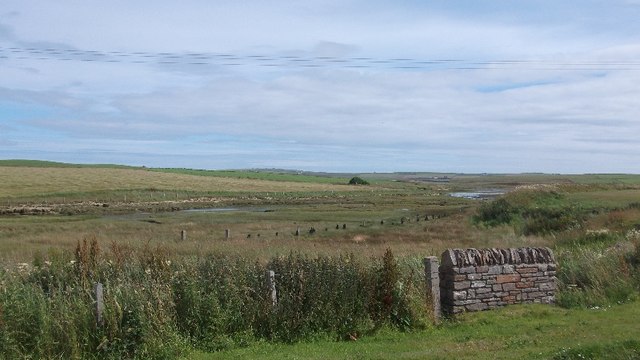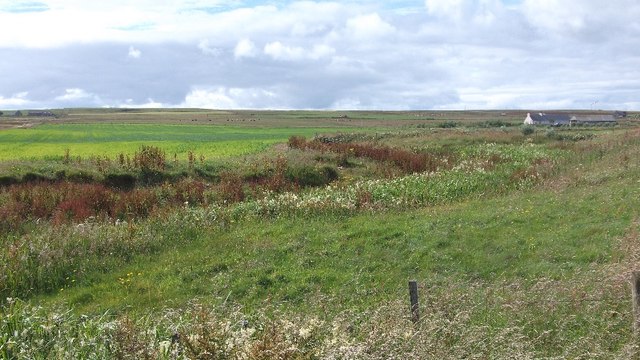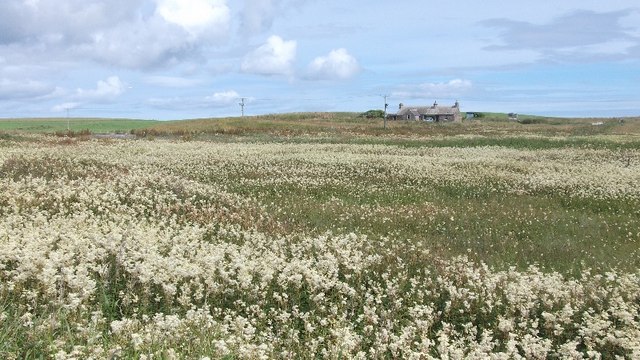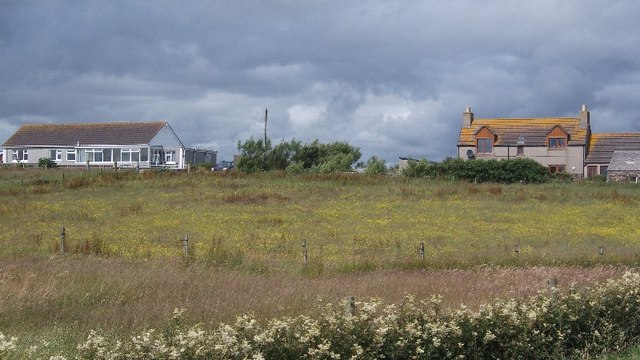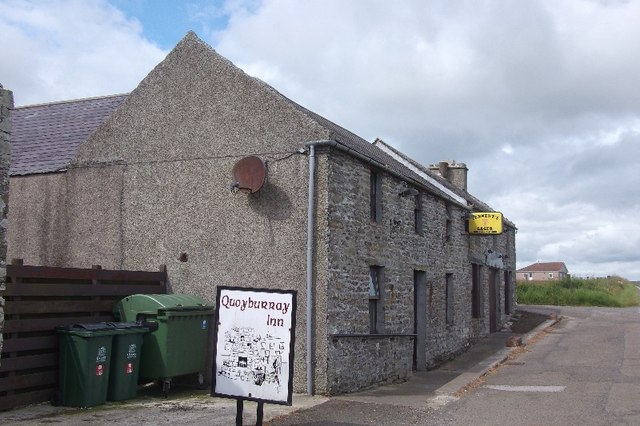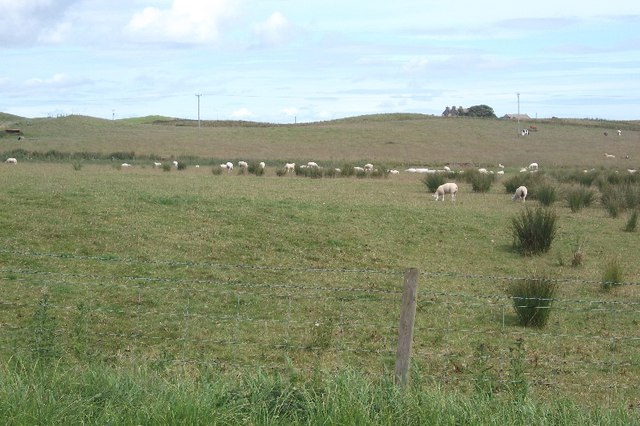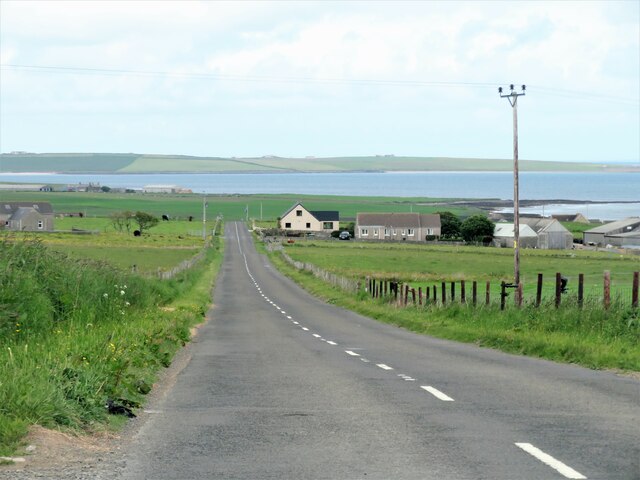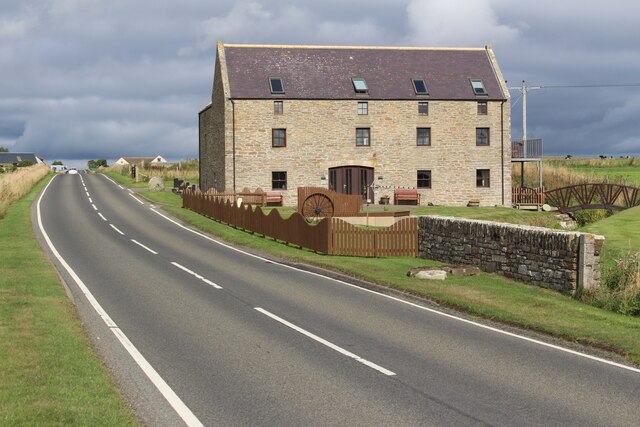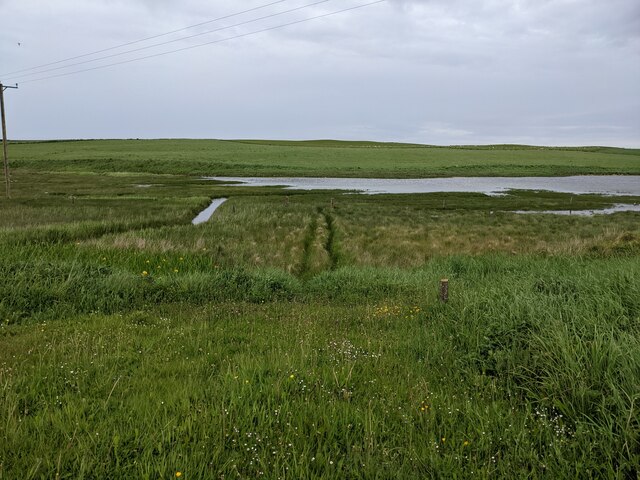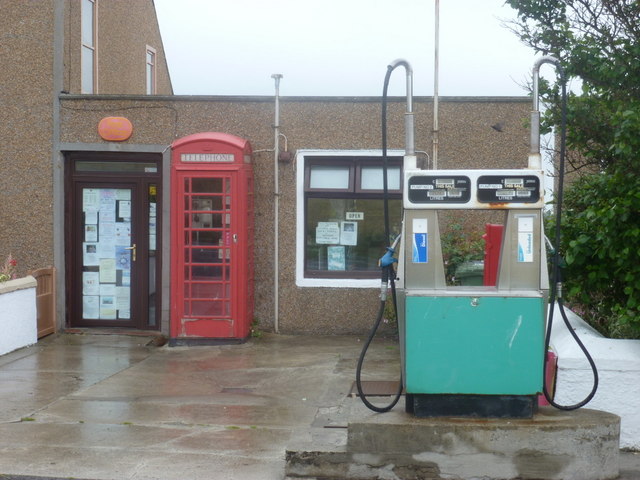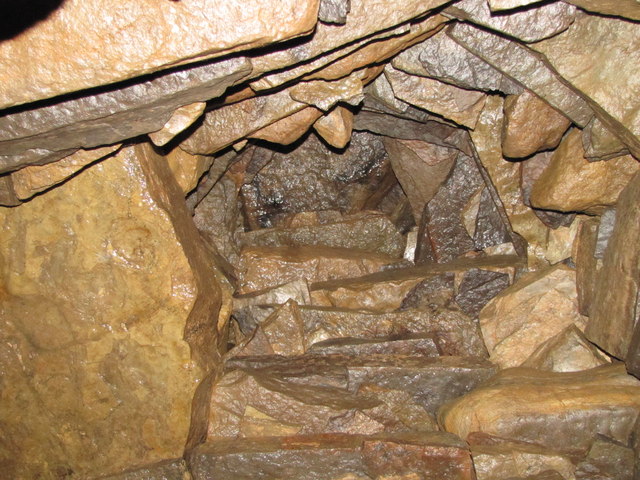Cuby Skerry
Coastal Feature, Headland, Point in Orkney
Scotland
Cuby Skerry
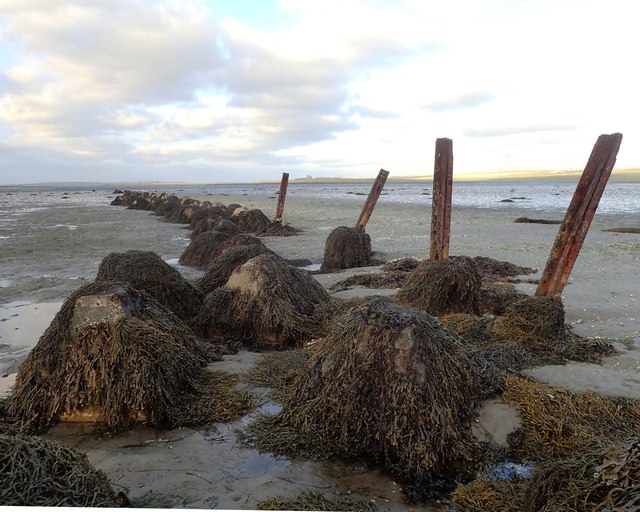
Cuby Skerry is a prominent coastal feature located in the Orkney Islands, an archipelago in the north of Scotland. It is specifically found in the northeastern part of the main island, known as Mainland. As a headland or point, Cuby Skerry extends into the North Sea, marking the end of a stretch of coastline.
The headland is characterized by its rugged and rocky terrain, with steep cliffs rising dramatically from the sea. These cliffs reach heights of approximately 50 meters (164 feet) and are composed primarily of sandstone, giving them a distinctive reddish color. Over time, erosion from the relentless waves has carved deep crevices and caves into the cliffs, adding to the area's wild beauty.
Cuby Skerry is also renowned for its rich biodiversity. The surrounding waters are teeming with marine life, including various species of fish, seals, and seabirds. It is particularly known as a breeding ground for puffins, which nest in the cliffs during the summer months, creating a bustling colony of these charismatic birds.
Access to Cuby Skerry is relatively challenging due to its remote location and rugged terrain. However, it remains a popular destination for nature enthusiasts, hikers, and birdwatchers who are captivated by its stunning coastal scenery and abundant wildlife. Exploring the headland offers visitors a chance to immerse themselves in the untamed beauty of the Orkney Islands and witness the powerful forces of nature that have shaped this coastal feature over millennia.
If you have any feedback on the listing, please let us know in the comments section below.
Cuby Skerry Images
Images are sourced within 2km of 58.926645/-2.8247074 or Grid Reference HY5204. Thanks to Geograph Open Source API. All images are credited.
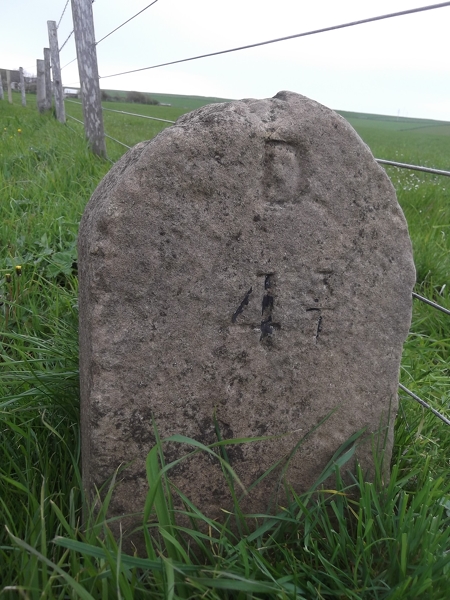
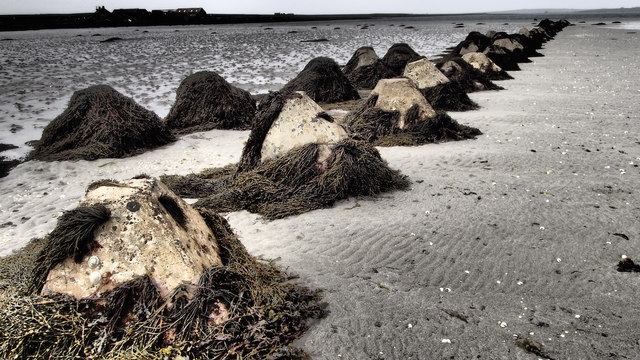
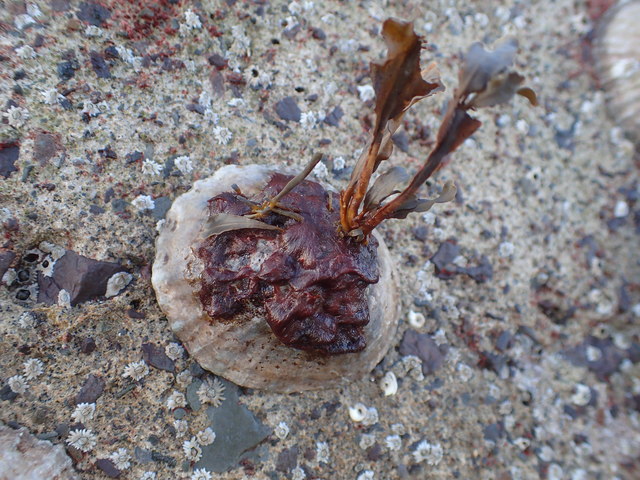
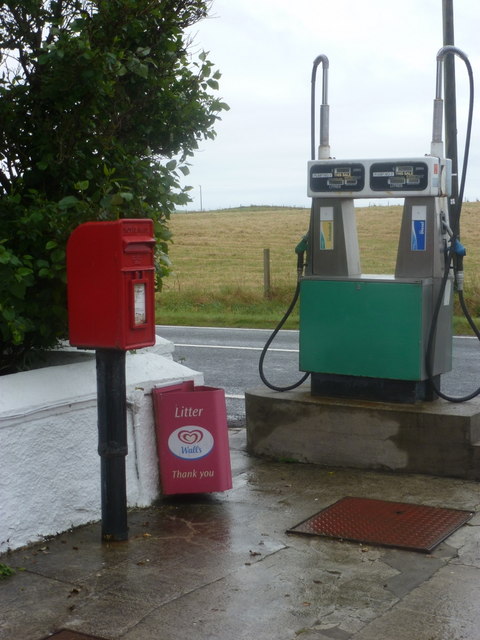
Cuby Skerry is located at Grid Ref: HY5204 (Lat: 58.926645, Lng: -2.8247074)
Unitary Authority: Orkney Islands
Police Authority: Highlands and Islands
What 3 Words
///surgical.envisage.formally. Near Tankerness, Orkney Islands
Nearby Locations
Related Wikis
St Peter's Pool, Orkney
St Peter's Pool is a bay in the East Mainland of Orkney, Scotland. This bay was the site of significant coastal defences during World War II, when a German...
Mine Howe
Mine Howe is an Iron Age subterranean man-made chamber dug 6 meters (20 feet) deep inside a large mound. It is located in the Tankerness area of Orkney...
Toab, Orkney
Toab is a parish on the Orkney Mainland, situated in the East Mainland. Toab is located off the A960 road at the head of Deer Sound on the Mainland, Orkney...
Tankerness
Tankerness is a district in the St Andrews parish in Mainland, Orkney, Scotland. Essentially a peninsula, it is about 13 kilometres (8 mi) south-east of...
Nearby Amenities
Located within 500m of 58.926645,-2.8247074Have you been to Cuby Skerry?
Leave your review of Cuby Skerry below (or comments, questions and feedback).
